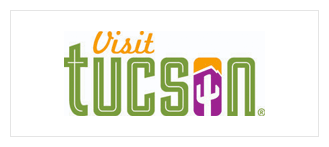 Read About Student Achievement Levels in Tucson, Arizona MSA
Read About Student Achievement Levels in Tucson, Arizona MSA
How are we doing?
NAEP Scores 4th Grade Reading (2024)

In 2024, Arizona ranked eighth in fourth-grade reading scores administered by the National Assessment of Educational Progress (NAEP) compared to the 10 western states. That placed Arizona students below the national average. Among the western states, Arizona experienced the largest decline, followed by Oregon, California, and Texas, while Nevada and Idaho saw an increase. In 2024, Arizona's 8th-grade math scores decreased slightly compared to 2022.
Why is it important?
Standardized test scores are one measure of a region’s ability to prepare its youth for the demands of higher education and a career. Creating skilled and productive future workers can benefit the local economy, and maintaining high-quality school systems can attract a talented workforce to the area. In addition to the significant economic impacts of developing a young, skilled workforce, good school systems raise the desirability of an area from a quality-of-life perspective. Low student achievement means that students may be ill-equipped to attend college or perform high-skilled labor. Low-performing schools also may be indicative of socioeconomic challenges in the community, such as poverty.
How do we compare?
In 2023, 28% of students in Arizona passed the Arizona Academics Standards Assessment (AASA) in mathematics. Maricopa County was the only county that met or exceeded the state proficiency standards, with 31% of eighth graders passing the test. Pima County placed second at 26%, while Navajo County was third. Performance across Arizona counties varied substantially, with Gila County recording the lowest passing rate of 12%.
8th Grade Students Passing the AASA Math Test (2024)

AzM2 scores in 2021 were lower across the board than in 2019. The statewide test was not administered in 2020 due to the COVID-19 pandemic. The pandemic created a challenging environment for students and educators. Year-to-year comparisons should be assessed with caution. However, the data in 2021 allows us to track where the students currently are and to appropriately address the steps necessary for our children’s education as we move beyond the challenges the pandemic created. In 2022, the state of Arizona introduced a new standardized test, AASA, that is similar to the prior AzM2 or AZMERIT tests but is not identical, making comparisons difficult.
In the AASA English Language Arts (ELA) test, 39% of third-graders statewide met or exceeded the state proficiency standards. That share increased to 41% for third-graders in Greenlee County and 42% in Maricopa County. Pima County fell just shy of the state percentage at 37.0%. Performance across Arizona counties varied substantially, with only two counties reporting scores higher than the state average of 39% on the third-grade ELA test. The remaining counties reported scores below the state average, with La Paz County posting the lowest at 23%.
In 2024, Arizona ranked eighth in fourth-grade reading scores administered by the National Assessment of Educational Progress (NAEP). This placed Arizona students below the national average in fourth-grade reading. In eighth-grade math, Arizona students also scored lower than the national average. Additionally, 2024 marked the lowest eighth-grade math score for Arizona since 2003. However, Arizona ranked fifth among western states in eighth-grade math scores, a slight improvement from sixth place in 2022.
Scores for Arizona’s students varied across race and ethnicity, with nearly all races achieving greater proficiency percentages in third-grade English language arts than eighth-grade math. Asian students achieved the highest rate of proficiency, both in third-grade English language arts (66%) and eighth-grade math (67%). White students achieved the second-highest proficiency rates at 54% and 41%, respectively. Rates for ‘two or more races’ were four percentage points below whites in third-grade English language arts and sixth percentage points below in eighth-grade math. Hispanics and Blacks lagged even further behind, as both groups had third-grade English language arts near the 30th percentile and eighth-grade math proficiency rates near the 20th percentile. Arizona’s Native American students continue to struggle. Students in this demographic had a 17% proficiency rate for third-grade English language arts and a 11% rate of proficiency in eighth-grade math.
What are the key trends?
Between 2003 and 2015, academic scores in Arizona improved more rapidly than the nation, allowing Arizona to surpass the nation in math and gain ground in reading. Math scores for eighth-graders in Arizona rose by nearly a percentage point over the past decade, compared to a decline of .25% for the nation. However, in 2019 math scores in Arizona declined slightly once again dropping below the nation. Math scores in Arizona and nationally declined further during the pandemic. Reading scores for Arizona fourth graders also improved over the past decade, rising from 210 to a high of 215.8 in 2019. This 2.8% increase for Arizona compared to a 0.1% decrease for the nation reduced the achievement gap between the nation and Arizona. From 2022 to 2024, both Arizona and the nation saw a decline in math scores for eighth-graders and reading scores for fourth-graders. Despite posting a lower than national average score in fourth-grade reading, Arizona's scores have steadily increased since 2005. However, from 2022 to 2024, Arizona experienced a 3.4% decrease, compared to a 0.8% decrease nationwide.
How is it measured?
Each fall and spring, Arizona students in the third through eighth grade and high school take the AASA exam. These exams measure students’ proficiency in English language arts and math. Percentages reported here are for those students who passed the 2023 spring AASA test in third-grade English language arts and eighth-grade math. In 2022, the AASA test replaced the AzM2 testing format. As of 2015, the AzM2 (formerly referred to as AzMERIT) exams replaced AIMS for reading, writing, and math. Unlike AIMS, passing is not a requirement for graduation from high school. National data are the average scale scores from the NAEP, an ongoing student assessment program conducted by the National Center for Education Statistics under the U.S. Department of Education.












